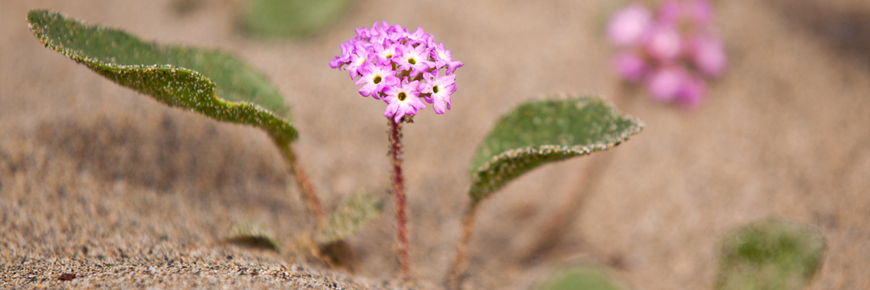
Pink Sand-verbena (Abronia umbellata)
Pacific Rim National Park Reserve
iḥukcḱin suicmis iiḥciip
Found on sand beaches and dune habitat along exposed coastlines, the Pink Sand-verbena is a perennial herb in its southern range but seldom survives the winters in Canada. With thick, fleshy, lance-shaped leaves and trailing stems up to several metres long. In late summer beautiful tiny pink flowers occur in many blossomed rounded clusters making it distinguishable from the similar Yellow Sand-verbena.
Three Reasons to love Pink Sand-verbenas:
1. Fascinating story of extirpation and discovery.
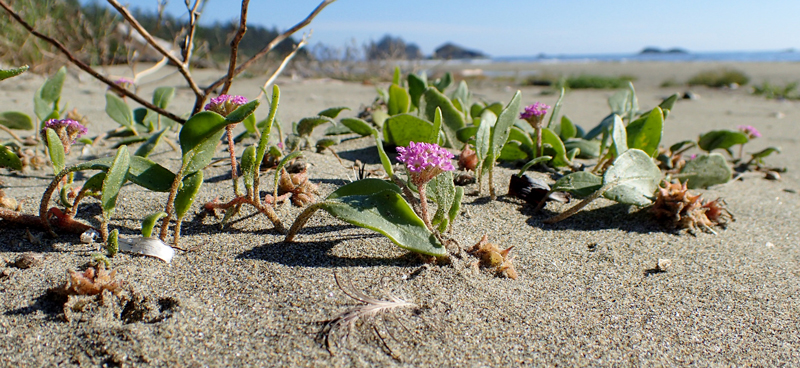
Despite historic records of the plant occurring at only three sites in Canada, on the central-west coast of Vancouver Island, the plant was considered extirpated (gone from the wild in Canada) for over half a century, not having been seen in Canada since the 1940s. But then it was re-discovered in 2000 and again in 2001 near Clo-oose on the West Coast Trail.
The survival of Pink Sand-verbena plants is precarious due to the ever changing nature of its sandy beach habitat. This habitat is within the extreme high-tide zone and in the uncommon ecosystem of sand beach/sand dune on the outer west coast. The rareness of this habitat coupled with the invasion of introduced beach grasses has greatly reduced the amount of habitat for this species.
Following rediscovery of this very rare plant in Canada, Parks Canada began to restore degraded coastal habitat and established three permanent populations to ensure this species’ continued success.
2. It is built to travel the wind and the sea
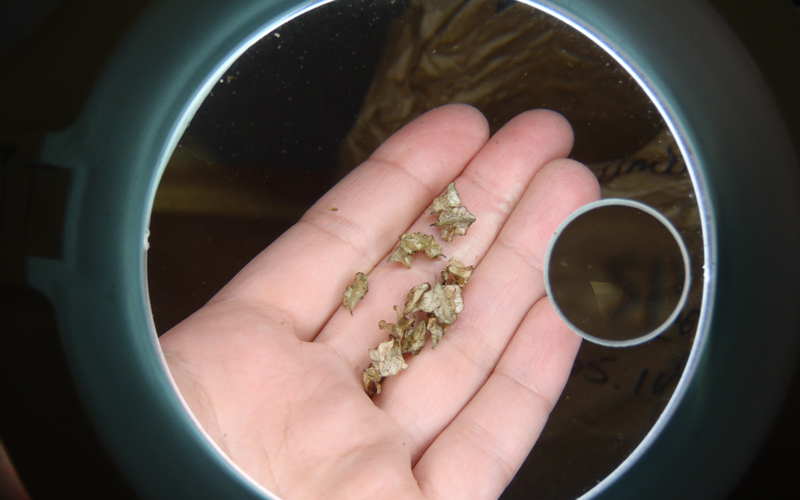
The seeds of Pink Sand-verbena are winged, to help in their dispersal. The wind blows seeds through the open sandy ecosystem, which land on new habitat or down the beach to be swept away by the tide. These plants only reproduce by seeds that undergo a period of forced dormancy since the tough fruit coat must first be roughened to allow seeds to germinate.
Even though the short-term survival of the plant is precarious due to its challenging habitat conditions, the tough fruits and seeds of this species provide the potential to persist in the seed bank or travel on ocean currents to sprout up at new locations.
3. Flagship species of local dune habitat restoration efforts in Pacific Rim National Park Reserve

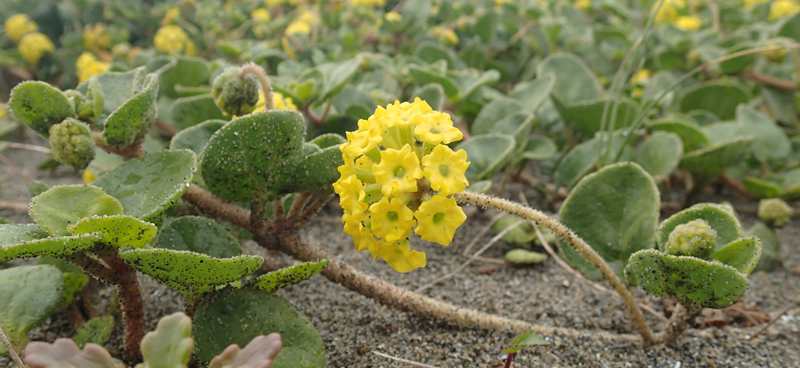
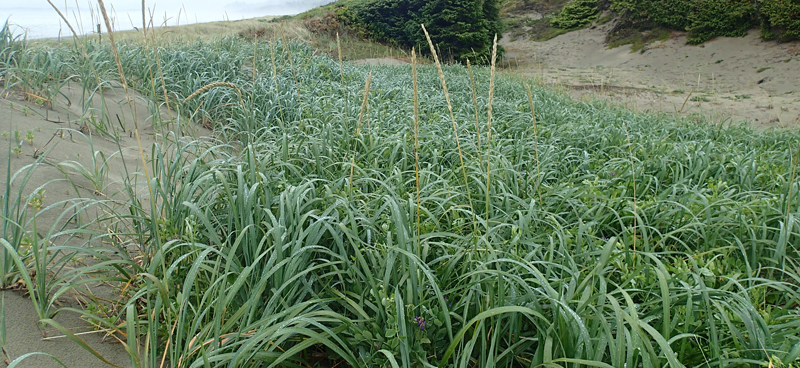
Pink Sand-verbena and Silky Beach Pea are currently the only federally listed plant species at risk found in the coastal sand ecosystems of the national park reserve. However, these habitats are also home to a host of other rare and at risk species. Restoring habitat for SARA listed species also means better quality and increased habitat for other important plant species such as Yellow Sand-verbena, Beach Morning Glory, Beach-carrot, Black Knotweed and Dune Wildrye. Furthermore, two endangered moth species (Edwards’ Beach Moth and Sand-verbena Moth) call these habitats in Pacific Rim National Park Reserve home.
Three ways to care for Pink Sand-verbena:
1. Extensive restoration work
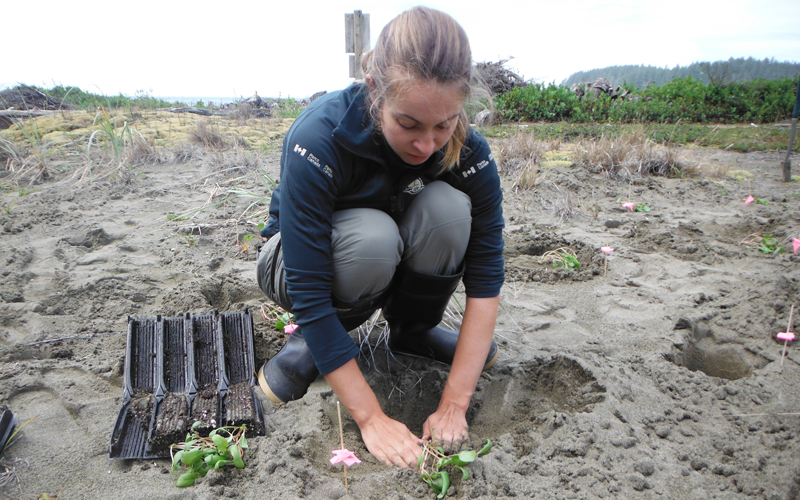
Parks Canada’s action:
Parks Canada undertakes ongoing maintenance of previously restored sites within the national park reserve boundaries. Unfortunately, invasive and introduced grasses are persistent species and require ongoing removal so that we do not lose the momentum that we have gained.
Action you can take:
Visit these places, but do so with care. Stick to the bare un-vegetated sand on beaches and dunes or existing trails and be careful not to walk on or trample beach and dune vegetation.
Consider volunteering for Parks Canada or join a local conservation group that is involved in restoration activities at a beach near you.
2. Ongoing Monitoring Work.
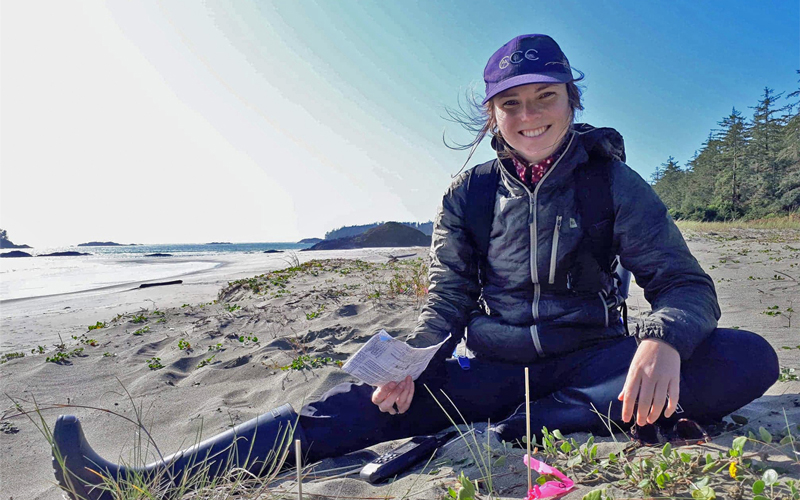
Parks Canada’s action:
Each summer, Parks Canada scientists monitor the populations of plants listed under the Species at Risk Act located at sites within the national park reserve boundaries. This work involves keeping track of changes in the number of plants, the amount of area covered and mapping of the area where they occur. Additionally, Parks Canada, with the assistance of many volunteers and First Nations, has done fecundity surveys, which means counting the numbers of flowers and seed pods that occur on plants. This helps better understand propagation rates and the conditions for this species survival in Canada.Action you can take:
Keep an eye out for Pink Sand-verbena plants when you walk the beach. Due to the seasonal and ephemeral nature of the plant, there is always the potential for plants to show up on almost any sandy, south-west facing beach. If you think you’ve found a plant growing at a new location contact the BC Conservation Data Centre.
3. Learn more

The more we pay attention, the more we learn, and we have certainly learned a lot over the years of conducting dune restoration, propagation, planting and annual monitoring!
Parks Canada’s action:
The lessons we’ve learned about dune restoration as well as propagating and planting, and the seeds collected from Pacific Rim National Park Reserve, contribute to genetic research and ensures this species and its genetics will persist in Canada for years to come.Action you can take:
Next time you come to Pacific Rim National Park Reserve, attend a coastal sand dune interpretive walk led by Parks Canada team member and learn more about this rare ecosystem and the species that live in it.
Learn more about Pink Sand-verbena and species at risk recovery:
Pink Sand-verbena – Species at Risk Registry
Edwards’ Beach Moth - SAR Registry
Sand-verbena Moth - SAR Registry
Silky Beach Pea – SARA registry
- Date modified :